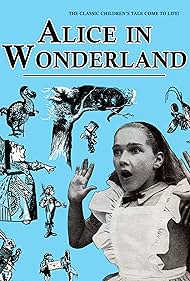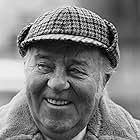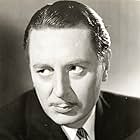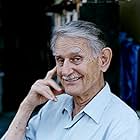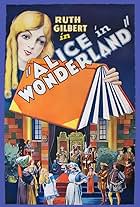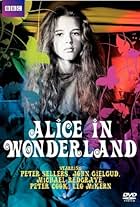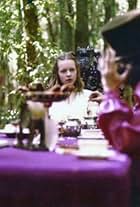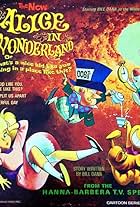Aggiungi una trama nella tua linguaA young girl named Alice falls down a rabbit-hole and finds herself in Wonderland, a fantasy land of strange characters and ideas.A young girl named Alice falls down a rabbit-hole and finds herself in Wonderland, a fantasy land of strange characters and ideas.A young girl named Alice falls down a rabbit-hole and finds herself in Wonderland, a fantasy land of strange characters and ideas.
- Candidato a 1 Primetime Emmy
- 1 candidatura in totale
Foto
Trama
Lo sapevi?
- ConnessioniEdited into Hallmark Hall of Fame (1951)
Recensione in evidenza
This adaptation of 'Alice in Wonderland' -- which includes scenes and characters from 'Through the Looking-Glass' -- was originally transmitted as a 'Hallmark Hall of Fame' special on 23 October 1955. I viewed a kinescope of it at the Museum of Television & Radio.
This tele-version is actually based on a stage adaptation, produced on Broadway in 1932, and written by two actresses: Florida Friebus and the legendary Eva Le Gallienne, who also cast herself as the White Queen. A high point of this TV production is when Miss Le Gallienne (La Le Gallienne?) makes her entrance in a gust of wind, flying in from the wings on wires! (I had the pleasure of seeing her repeat this performance in person, when she revived the stage production on Broadway in 1982 ... and this was an actress who had made her Broadway debut in 1916!) Less effective here, sadly, is Elsa Lanchester as the Red Queen. Lanchester's physical appearance and personality more nearly resemble the White Queen in Lewis Carroll's book, but that role was already spoken for here.
Various adaptations of the 'Alice' books have made the mistake of moving arbitrarily from one story to the other. In this production, Alice begins the play by entering Wonderland through her looking-glass, this being an easier transition to perform onstage than having her fall down a rabbit-hole. Once inside the looking-glass, the first act is a fairly faithful (abridged) adaptation of 'Alice's Adventures in Wonderland', ending with Alice's denunciation of the pack of cards. But rather than awakening from a dream, this propels her into the second act, which is an equally faithful adaptation of 'Through the Looking-Glass'.
In the central role, Gillian Barber is excellent as Alice: an attractive teenager doing a credible impersonation of a little girl. Why didn't Barber have a better career? Another good performance is given by an obscure actor named Gilbert Mack, masked and heavily costumed as the Frog Footman. I was intrigued to discover that the Walrus is played by Marc Breaux, who later had a notable career as a choreographer. Cast here as a walrus, he's appropriately ungainly.
Most productions of the Le Gallienne version of 'Alice' cast male actors in the female roles of the Duchess and the Queen of Hearts. I'm not sure if that was a good idea, as they often come off as shrill drag queens. Here, the Duchess is played delightfully by Bobby Clark. He makes almost no attempt at female impersonation, instead pretending that he's still starring on Broadway as half of the team Clark & McCullough. Clark's timing and delivery are excellent.
I was also impressed with Reginald Gardiner, riding a pantomime horse as the White Knight. Far less impressive are the dithering Hiram Sherman as the King of Hearts and the annoyingly nasal Alice Pearce, who portrays the snoring Dormouse with sinuses at full blast. The ubiquitous J. Pat O'Malley is cast here as the Gryphon. I would have cast him in nearly any other role -- he had played Tweedledum and Tweedledee in Disney's animated version -- but he's surprisingly good here, in a role he doesn't really fit.
This entire production is mounted on an extremely low budget, in what's very obviously a stage set. However, the fantasy and whimsy easily rise above the low production values. I'll rate this delightful special 8 out of 10.
This tele-version is actually based on a stage adaptation, produced on Broadway in 1932, and written by two actresses: Florida Friebus and the legendary Eva Le Gallienne, who also cast herself as the White Queen. A high point of this TV production is when Miss Le Gallienne (La Le Gallienne?) makes her entrance in a gust of wind, flying in from the wings on wires! (I had the pleasure of seeing her repeat this performance in person, when she revived the stage production on Broadway in 1982 ... and this was an actress who had made her Broadway debut in 1916!) Less effective here, sadly, is Elsa Lanchester as the Red Queen. Lanchester's physical appearance and personality more nearly resemble the White Queen in Lewis Carroll's book, but that role was already spoken for here.
Various adaptations of the 'Alice' books have made the mistake of moving arbitrarily from one story to the other. In this production, Alice begins the play by entering Wonderland through her looking-glass, this being an easier transition to perform onstage than having her fall down a rabbit-hole. Once inside the looking-glass, the first act is a fairly faithful (abridged) adaptation of 'Alice's Adventures in Wonderland', ending with Alice's denunciation of the pack of cards. But rather than awakening from a dream, this propels her into the second act, which is an equally faithful adaptation of 'Through the Looking-Glass'.
In the central role, Gillian Barber is excellent as Alice: an attractive teenager doing a credible impersonation of a little girl. Why didn't Barber have a better career? Another good performance is given by an obscure actor named Gilbert Mack, masked and heavily costumed as the Frog Footman. I was intrigued to discover that the Walrus is played by Marc Breaux, who later had a notable career as a choreographer. Cast here as a walrus, he's appropriately ungainly.
Most productions of the Le Gallienne version of 'Alice' cast male actors in the female roles of the Duchess and the Queen of Hearts. I'm not sure if that was a good idea, as they often come off as shrill drag queens. Here, the Duchess is played delightfully by Bobby Clark. He makes almost no attempt at female impersonation, instead pretending that he's still starring on Broadway as half of the team Clark & McCullough. Clark's timing and delivery are excellent.
I was also impressed with Reginald Gardiner, riding a pantomime horse as the White Knight. Far less impressive are the dithering Hiram Sherman as the King of Hearts and the annoyingly nasal Alice Pearce, who portrays the snoring Dormouse with sinuses at full blast. The ubiquitous J. Pat O'Malley is cast here as the Gryphon. I would have cast him in nearly any other role -- he had played Tweedledum and Tweedledee in Disney's animated version -- but he's surprisingly good here, in a role he doesn't really fit.
This entire production is mounted on an extremely low budget, in what's very obviously a stage set. However, the fantasy and whimsy easily rise above the low production values. I'll rate this delightful special 8 out of 10.
- F Gwynplaine MacIntyre
- 28 gen 2006
- Permalink
I più visti
Accedi per valutare e creare un elenco di titoli salvati per ottenere consigli personalizzati
Dettagli
- Data di uscita
- Paese di origine
- Lingua
- Celebre anche come
- Hallmark Hall of Fame: Alice in Wonderland (#5.1)
- Vedi altri crediti dell’azienda su IMDbPro
Contribuisci a questa pagina
Suggerisci una modifica o aggiungi i contenuti mancanti
